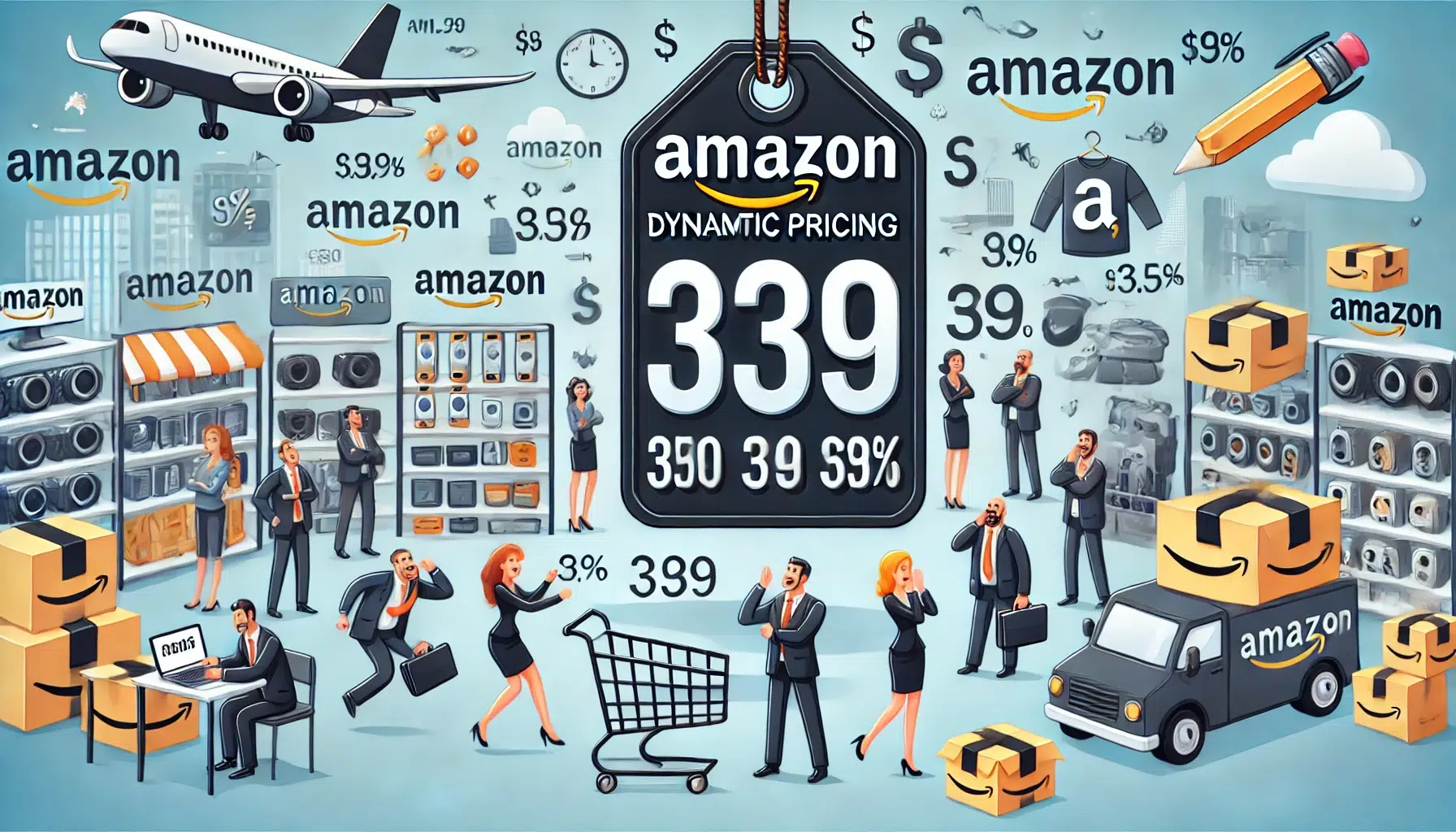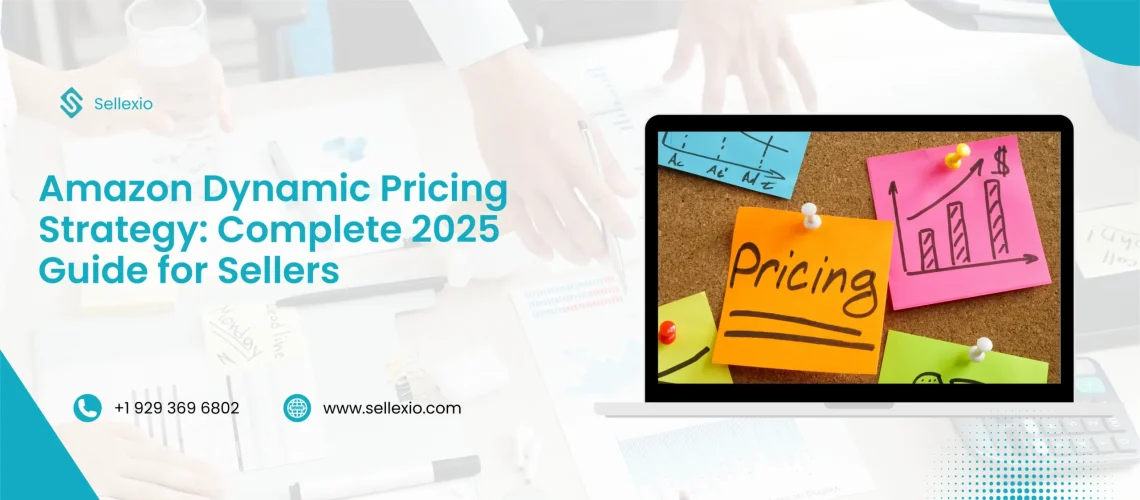Selling on Amazon has become highly competitive. Thousands of sellers list the same or similar products, and customers often make buying decisions based on price. A slight difference in price, even a few cents, can determine whether you secure a sale or lose it to another seller. This is where an Amazon dynamic pricing strategy becomes essential.
Dynamic pricing is a powerful way to stay ahead in the marketplace. It allows your prices to adjust automatically based on real-time demand, competitor moves, and customer activity. Instead of relying on static pricing that never changes, dynamic pricing makes your listings smarter and more adaptable. In this complete guide, you will learn what Amazon dynamic pricing is, how it works, its benefits and risks, and how you can implement it effectively in 2025.
What is Amazon Dynamic Pricing?

Amazon dynamic pricing means adjusting the price of your product automatically depending on different market factors. Unlike fixed pricing, where the price stays the same for months, dynamic pricing uses data to update prices in real time.
The goal is simple. You want to remain competitive, win more sales, and still protect your profit margins. Sellers who use dynamic pricing ensure that their products stay visible and relevant to buyers.
When multiple sellers offer the same product, the one with the most attractive price usually gets the customer’s attention. Amazon itself promotes competitive pricing as a key factor in deciding which seller wins the Buy Box. That is why dynamic pricing is no longer just an option but a necessity for long-term success.
How Does Amazon Dynamic Pricing Work?
Amazon dynamic pricing relies on automation and algorithms. Inside Seller Central, there is a tool called Automate Pricing. This feature allows sellers to set rules that adjust prices automatically without the need for constant manual updates.
Here is how it works.
- You create a pricing rule in the Automate Pricing tool.
- You decide whether your product should match, beat, or stay above competitor prices.
- You set minimum and maximum price limits to protect your margins.
- Amazon’s algorithm then tracks real-time changes in demand, competitor activity, and customer behavior.
- The system updates your prices according to the rules you have defined.
For example, if demand rises for your product during a shopping event, your price may increase. If inventory is high but demand is low, the system might lower the price slightly to encourage more sales.
This automated process allows you to compete effectively without spending hours updating prices manually.
Benefits of Using Amazon Dynamic Pricing
A strong Amazon dynamic pricing strategy offers several advantages.
- Increased visibility. Competitive prices increase your chances of appearing in customer searches.
- Higher Buy Box success. Dynamic pricing improves your chances of winning the Buy Box.
- Better inventory control. Prices can be adjusted to prevent overstocking or stockouts.
- Improved profit optimization. By setting smart rules, you balance volume and margins.
- Faster sales velocity. Products that sell consistently improve in organic rankings.
- Data-driven decisions. You base pricing on real numbers instead of guesswork.
- Customer trust. Offering competitive and timely prices helps build repeat sales.
Sellers who ignore dynamic pricing often struggle to keep up with competitors who adapt quickly to market changes.
Risks and Challenges of Amazon Dynamic Pricing
While the benefits are clear, dynamic pricing also comes with risks.
- Margin erosion. Prices can drop too low if rules are not carefully set.
- Customer confusion. Constant price changes may reduce trust.
- Over-reliance on automation. Algorithms may not always reflect your brand’s goals.
- Unfair pricing issues. Aggressive pricing strategies could attract legal or compliance problems.
- Return rates. If prices fluctuate too much, customers may feel regret and return items.
The key is to maintain balance. Dynamic pricing should work for you, not against you. Always set clear rules and review performance often.
Step-by-Step Guide to Implementing Amazon Dynamic Pricing
Here is how to set up dynamic pricing in Seller Central.
Step 1: Log into Seller Central
Access your seller account using your login credentials.
Step 2: Go to the Automate Pricing Tool
From the menu, click on “Pricing” and select “Automate Pricing.”
Step 3: Create a Customized Pricing Rule
Click on “Create customized pricing rule” to begin.
Step 4: Choose Rule Type
Amazon offers several rule types:
- Featured Offer pricing. Competes for the Buy Box.
- Lowest price match. Matches or beats the lowest price in the marketplace.
- External price match. Adjusts price if the product is cheaper outside Amazon.
- Business pricing. Targets Amazon Business customers.
- Sales unit rules. Adjusts prices after specific sales volumes.
Step 5: Name the Rule
Give your rule a name that is easy to identify.
Step 6: Define Rule Settings
- Select marketplaces (US, UK, etc.).
- Choose pricing action: match, beat, or stay above competitors.
- Set minimum and maximum price margins.
- Apply seller filters such as FBA-only comparisons.
Step 7: Review and Save
Check all settings and save the rule.
Step 8: Monitor and Adjust
Track performance and refine rules regularly.
Key Factors Influencing Amazon Dynamic Pricing
Dynamic pricing decisions are driven by several key elements.
- Demand levels. Higher demand often increases prices.
- Inventory volume. Low stock raises prices to avoid running out. Excess stock may lower prices.
- Competitor prices. Sellers must adapt to competitor moves.
- Customer visits. If customers view but do not buy, prices may drop slightly.
- Time and events. Sales events like Prime Day can trigger significant price changes.
Understanding these factors helps you set smarter rules that align with your sales goals.
10 Best Practices for Amazon Dynamic Pricing
- Monitor competitor prices often.
- Adjust based on sales velocity to maintain rankings.
- Plan deep discounts during key events like Prime Day.
- Make small pricing changes instead of large jumps.
- Use customer reviews to support stronger prices.
- Avoid static prices for long periods.
- Take advantage of sales momentum to optimize further.
- Offer larger packs or bundles for better value.
- Balance pricing with advertising to improve conversions.
- Reverse poor pricing tests quickly.
These practices ensure that your pricing strategy remains flexible and profitable.
Tools and Software for Dynamic Pricing
Amazon provides the Automate Pricing tool for free. However, many sellers also use third-party tools for more advanced strategies.
- RepricerExpress. Known for fast price adjustments.
- Feedvisor. Uses AI for profit-driven pricing.
- Informed.co. Focuses on competitor analysis.
The right tool depends on your business size, goals, and budget.
Amazon Dynamic Pricing and the Buy Box
Winning the Buy Box is the ultimate goal for Amazon sellers. Around 80 percent of sales come from the Buy Box. Price is one of the biggest factors that decide who wins it.
Dynamic pricing allows you to stay competitive without lowering your price too far. By setting clear rules, you can protect your margins while still remaining Buy Box eligible. Sellers who do not use dynamic pricing often struggle to compete for this vital sales position.
Future of Amazon Dynamic Pricing in 2025
Dynamic pricing continues to evolve. In 2025, sellers can expect greater use of artificial intelligence. Predictive models will forecast demand shifts before they happen. Integration with inventory systems will prevent overstocking. Pricing will also align more closely with advertising strategies, ensuring that marketing spend matches competitive prices.
Sellers who adopt these innovations early will have a strong advantage in the years ahead.
FAQs About Amazon Dynamic Pricing
It works through automation tools that adjust prices based on rules and market data.
The biggest benefit is higher chances of winning the Buy Box and boosting sales.
Yes, if rules are not set carefully. Always set minimum margins.
Yes, especially in competitive categories where buyers compare prices quickly.
Protect your brand by avoiding extreme price drops. Balance affordability with perceived value.
Conclusion
Amazon dynamic pricing strategy is one of the most powerful tools available for sellers in 2025. It ensures that your prices remain competitive while protecting your profit margins. With the right setup, you can increase visibility, win the Buy Box, and drive consistent growth.
However, success depends on strategy. Automation must be combined with clear rules, constant monitoring, and a focus on customer trust. By applying best practices and staying updated with market trends, you can turn dynamic pricing into a strong advantage.
Smart pricing is not about racing to the lowest number. It is about balance, adaptability, and making informed decisions. Sellers who master this strategy will secure long-term success on Amazon.


